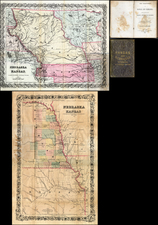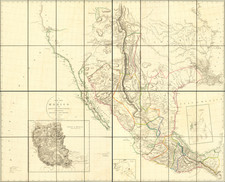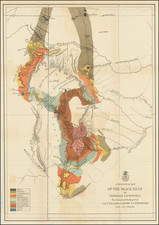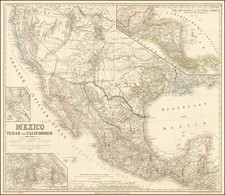Election-related map of the Dakota Territory, immediately pre-dating the Great Sioux War of 1876.
A special example of Cram's hand-colored folding map of the Dakotas, this example with manuscript additions of voter statistics in the margin.
Dakota was still a territory when this map was produced in 1875, and it would still be so during the presidential election of 1876. Thus the election data in the right margin refers to a local election, which the Republicans carried handily. It is possible, maybe likely, that the map was used for official purposes by the canvassing territorial board, or by the state election authority.
The map holds further interest as it comes immediately before the Great Sioux War of 1876, which was spurred by U. S. efforts to wrest the Black Hills (and its presumed gold wealth) from the hands of the local Sioux tribes. The Black Hills are named on the map, but no settlements are shown.
George F. Cram (1842-1928) was a Civil War veteran, who joined his uncle's map business and would later go on to become the most important American publisher in the field during the latter part of the 19th century.
George F. Cram (1842-1928), or George Franklin Cram, was an American mapmaker and businessman. During the Civil War, Cram served under General William Tecumseh Sherman and participated in his March to the Sea. His letters of that time are now important sources for historians of the Civil War. In 1867, Cram and his uncle, Rufus Blanchard, began the company known by their names in Evanston, Illinois.
Two years later, Cram became sole proprietor and the company was henceforth known as George F. Cram Co. Specializing in atlases, Cram was one of the first American companies to publish a world atlas. One of their most famous products was the Unrivaled Atlas of the World, in print from the 1880s to the 1950s.
Cram died in 1928, seven years after he had merged the business with that of a customer, E.A. Peterson. The new company still bore Cram’s name. Four years later, the Cram Company began to make globes, a branch of the business that would continue until 2012, when the company ceased to operate. For the final several decades of the company’s existence it was controlled by the Douthit family, who sold it just before the company was shuttered.











![[Report and] Map of an Exploring Expedition to The Rocky Mountains in the Years 1842 and to Oregon & North California in the Years 1843-44 By Brevet Capt. J. C. Fremont of the Corps of Topographical Engineers . . .](https://storage.googleapis.com/raremaps/img/small/88488.jpg)


